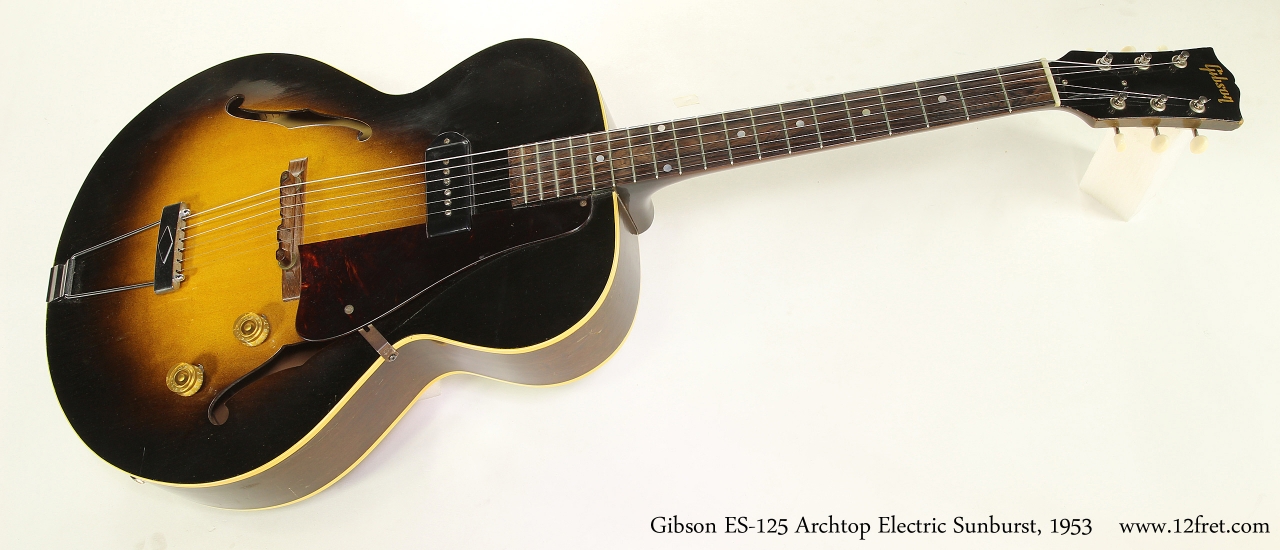

The guitars pick-guard was made of tortoise-shell style celluloid. The headstock, like the previously mentioned guitars, was unadorned except for the Gibson logo silk-screened in gold lettering across the top. The unbound solid Honduras mahogany neck was capped with a Brazilian rosewood fretboard which was originally topped with pearloid dot markers. The pickup was now Gibson's P90 dog-eared unit with adjustable pole-pieces. The back and sides were also made of maple.

It was a development from the ES-100, introduced in 1938 with a slightly smaller body, and carrying a ‘Charlie Christian’ pickup. The body on this guitar was now 16 1/4 inches in width and came with a laminated arched maple top, which became Gibson's standard on it's electric hollow body instruments. Built from 1941 to 1970 with a break during WW2, the Gibson ES-125 archtop was a popular, entry level electric guitar with a single P-90 pickup. In 1940 this changed to Gibson's first pole magnet pickup.īy 1941, the ES-100 was dropped from the line-up and replaced with the Gibson ES-125 model. Originally the pickup on this model was a blade style unit. The strings were held in place by a trapeze tail-piece. The neck was unbound and capped with a rosewood fretboard. The guitars arched top was carved and made of spruce. Its market was aimed at country and jazz style players. By 1970 the entire line of Gibsons ES-125 models were discontinued. George Thorogood favored the ES-125CD model. Within the guitars body were two sound-posts. Between 19 Gibson produced 475 ES-125C and ES-125CD full bodied guitars.

It's body was bound on the top and bottom. The ES-100 was two inches shorter than the ES-150, having a body depth of a mere 14 1/4 inches.


 0 kommentar(er)
0 kommentar(er)
